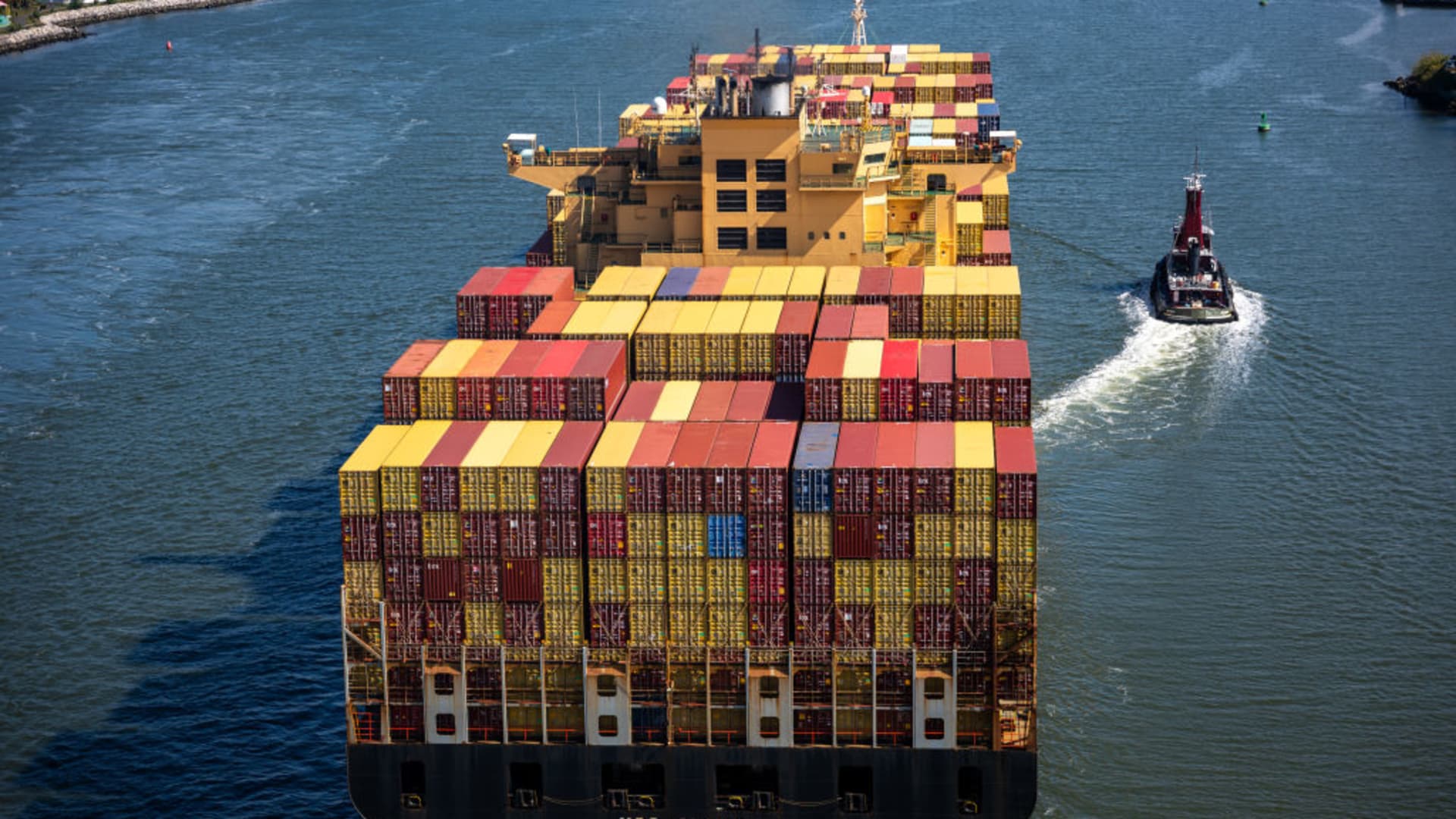Striking workers at the Red Hook Container Terminal in Brooklyn gather before a visit by Mayor Eric Adams after members of the International Longshoremen’s Association, or ILA, began walking off the job after 12:01 a.m. ET on October 01, 2024 in Brooklyn, New York.
Spencer Platt | Getty Images
As the East and Gulf coast ports strike hits its third day on Thursday, the nationwide logistics system is beginning to show signs of stress, with thousands of containers dumped at the wrong ports and billions of dollars in trade at anchor on ships. Ocean carrier surcharges for shipping clients are beginning to mount, and the need to use trucking and rail to move diverted cargo to ultimate destinations is adding to supply chain costs.
The building chaos is occurring with no signs that the International Longshoremen’s Association and United States Maritime Alliance are back at the negotiating table in an attempt to work through significant differences on wage increase levels and use of port automation, despite consistent efforts by the Biden administration to get the parties back into collective bargaining.
In the mad dash to unload as many containers as possible for clients, ocean carriers moved containers off at alternative ports, but according to Vizion, which tracks container movements, roughly 2,000 shipments may have been dropped at a port that was not their intended destination.
Paul Brashier, vice president of global logistics at ITS Logistics, told CNBC he has clients who were notified their containers were at alternative ports as a result of the container dumping.
“These diversion dropoffs inflate the inland transportation cost,” said Brashier. “Trucking companies get paid for a round trip where the truck driver needs to pick up and drop off the containers at the same port. The diversions are adding to transportation costs because of the additional mileage.”
Brashier said some clients had containers that were once destined for the Port of Savannah in Georgia diverted to the Port of Norfolk in Virginia in the last hours before the strike began. A once original 10-mile round trip for their truck driver moving a container in Savannah would have cost $300. Now with the diversion to Virginia, the round trip is almost a thousand miles which increases the costs to $2,000 to cover the fuel and time on the road.
“Pre-strike and post-strike out-of-network container diversions are already driving up shipping costs,” Brashier said. “In most cases, little warning was…
Click Here to Read the Full Original Article at Top News and Analysis (pro)…


